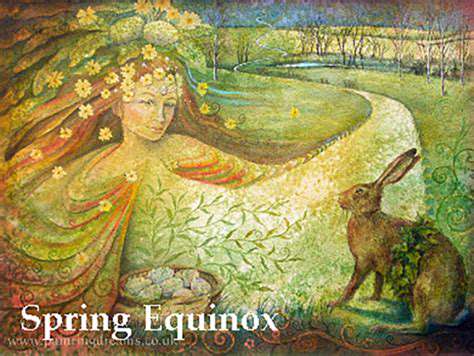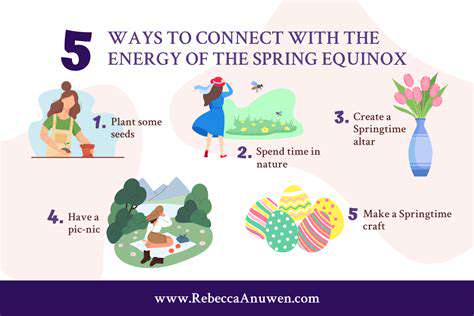Spring Equinox 2025 Celebrations: History, Traditions, and How to Enjoy the Day
Outline
- Spring Equinox heralds nature's awakening across northern regions
- Global communities honor seasonal shifts through diverse rituals
- Japan's flower-viewing custom aligns with celestial patterns
- Day-night equilibrium offers unique astronomical observations
- Contemporary festivals blend ancestral wisdom with modern creativity
- Personal goal-setting during this period enhances environmental awareness
- Eco-focused initiatives gain momentum during equinox events
- Ancient civilizations developed sophisticated seasonal markers
- Seasonal cuisine celebrates regional harvest cycles
- Individualized observances create meaningful connections
The Essence of the Spring Equinox

Historical Significance of the Spring Equinox
- Seasonal transition marked by agricultural societies worldwide
- Celestial patterns guided ancient planting calendars
- Cultural narratives intertwined with astronomical phenomena
Around March 20th-21st annually, the vernal equinox signals profound changes in Earth's relationship with the sun. Egyptian priests tracked Sirius' position to predict Nile floods, coordinating their planting schedules with cosmic precision. This synchronization between celestial movements and agricultural practices reveals humanity's historical dependence on natural cycles.
Persian communities still celebrate Nowruz with symbolic items representing renewal - sprouted lentils for rebirth, apples for beauty, and garlic for health. These tangible elements connect modern celebrants to ancestral wisdom about seasonal transitions.
Global Traditions and Celebrations
Hanami (flower viewing) in Japan exemplifies how cultures adapt to seasonal changes. Families spread picnic blankets under sakura trees, appreciating blossoms that peak around equinox time. This centuries-old practice embodies the Japanese concept of mono no aware - bittersweet awareness of life's transience.
Native American nations like the Hopi observe Powamuya with bean-planting ceremonies and kachina dances. These rituals reinforce community bonds while ensuring practical knowledge transfer about desert agriculture.
Scientific Understanding of the Equinox
The precise moment when solar rays strike Earth's equator directly creates nearly equal daylight/nighttime hours globally. This geometric alignment triggers measurable environmental changes - increased bird migration, insect activity, and plant growth patterns. Farmers worldwide still reference these natural indicators alongside modern weather forecasts when planning crops.
Modern-Day Celebrations
Contemporary festivals like London's Spring Equinox Carnival fuse elements from multiple traditions. Steel drummers perform alongside Morris dancers while food stalls offer both Caribbean callaloo and traditional British simnel cake. These multicultural celebrations demonstrate how ancient observances evolve in diverse societies.
Urban dwellers increasingly participate in guerilla gardening initiatives during equinox weekends, transforming neglected public spaces into vibrant floral displays. Such activities satisfy both environmental and social needs in concrete-dominated landscapes.
Tips for Enjoying the Spring Equinox
- Create nature mandalas with foraged materials
- Host a seasonal ingredient potluck
- Practice sunrise meditation
Local botanical gardens often host special equinox tours explaining plant responses to changing light conditions. Many participants report enhanced appreciation for subtle seasonal transformations after these educational walks.
Historical Significance of Spring Equinox Celebrations

Ancient Roots of Spring Observances
Mayan architects designed El Castillo pyramid at Chichén Itzá to create serpent-shaped light patterns during equinoxes. This architectural marvel demonstrates sophisticated astronomical understanding without modern technology. Similarly, Celtic communities built stone circles aligned with equinoctial sunrises, proving ancient fascination with celestial mechanics.
Mythological Connections
Greek legends tell of Persephone's return from Hades during this season, explaining Earth's fertility renewal. Modern psychologists interpret this myth as representing personal growth cycles - the descent into darkness (winter) followed by renewal (spring). This enduring narrative continues inspiring artists and writers worldwide.
Contemporary Practices
Neo-pagan communities celebrate Ostara with egg-decorating and seed-planting rituals. Meanwhile, scientists organize citizen science projects tracking equinox-related phenomena like cherry blossom blooming times. These parallel activities show how ancient and modern approaches coexist.
Traditional Practices Around the World
Seasonal Celebrations Across Cultures
Mexican towns recreate ancient equinox rituals at Teotihuacán pyramids, where participants wear white and raise arms to absorb solar energy. Though modernized, these practices maintain spiritual connections to Mesoamerican ancestors.
Modern Adaptations
Korean families prepare pine needle tea during equinox, believed to cleanse winter stagnation. Urban youth have adapted this tradition by creating pine-infused cocktails at spring festival mixology workshops.
2025 Celebration Ideas
Consider joining Kyoto's nighttime hanami events featuring illuminated cherry trees, or Arizona's equinox sound healing sessions inside ancient cliff dwellings. Many travel agencies now offer specialized equinox tours combining cultural immersion with astronomical education.
How to Celebrate the Spring Equinox in 2025

Creative Celebration Methods
- Organize a dawn chorus birdwatching event
- Create seasonal art using natural dyes
- Host a seed exchange with neighbors
Experimental chefs suggest preparing equinox menus balancing bitter spring greens with sweet early berries, mirroring nature's balance. Farmers markets often feature cooking demonstrations highlighting these seasonal pairings.
Technology-Enhanced Observances
Astronomy apps like Stellarium help urbanites locate equinox sunrise points amidst skyscrapers. Augmented reality filters can overlay ancient ritual information onto modern landscapes during equinox walks.
Remember: The most meaningful celebrations blend personal creativity with cultural awareness.Read more about Spring Equinox 2025 Celebrations: History, Traditions, and How to Enjoy the Day
Hot Recommendations
- Duke Basketball: A Legacy of Excellence – Season Recap and Future Stars
- One Battle After Another: Stories of Overcoming Challenges and Triumphs
- MLB Games Tonight: Schedule, Scores & Key Matchups to Watch
- Men’s March Madness 2025: Expert NCAA Bracket Predictions & Winning Strategies
- Spring Equinox 2025 Celebrations: History, Traditions, and How to Enjoy the Day
- Trump’s Education Policies: What the Department of Education Means for 2025
- First Day of Spring 2025: Seasonal Traditions, Celebrations & Outdoor Tips
- Bulls vs Kings: In Depth NBA Game Analysis and Key Player Stats
- The Rise of Jordan Mason: Career Highlights and Future Prospects
- Hudson River: Environmental Insights, History & Scenic Exploration


